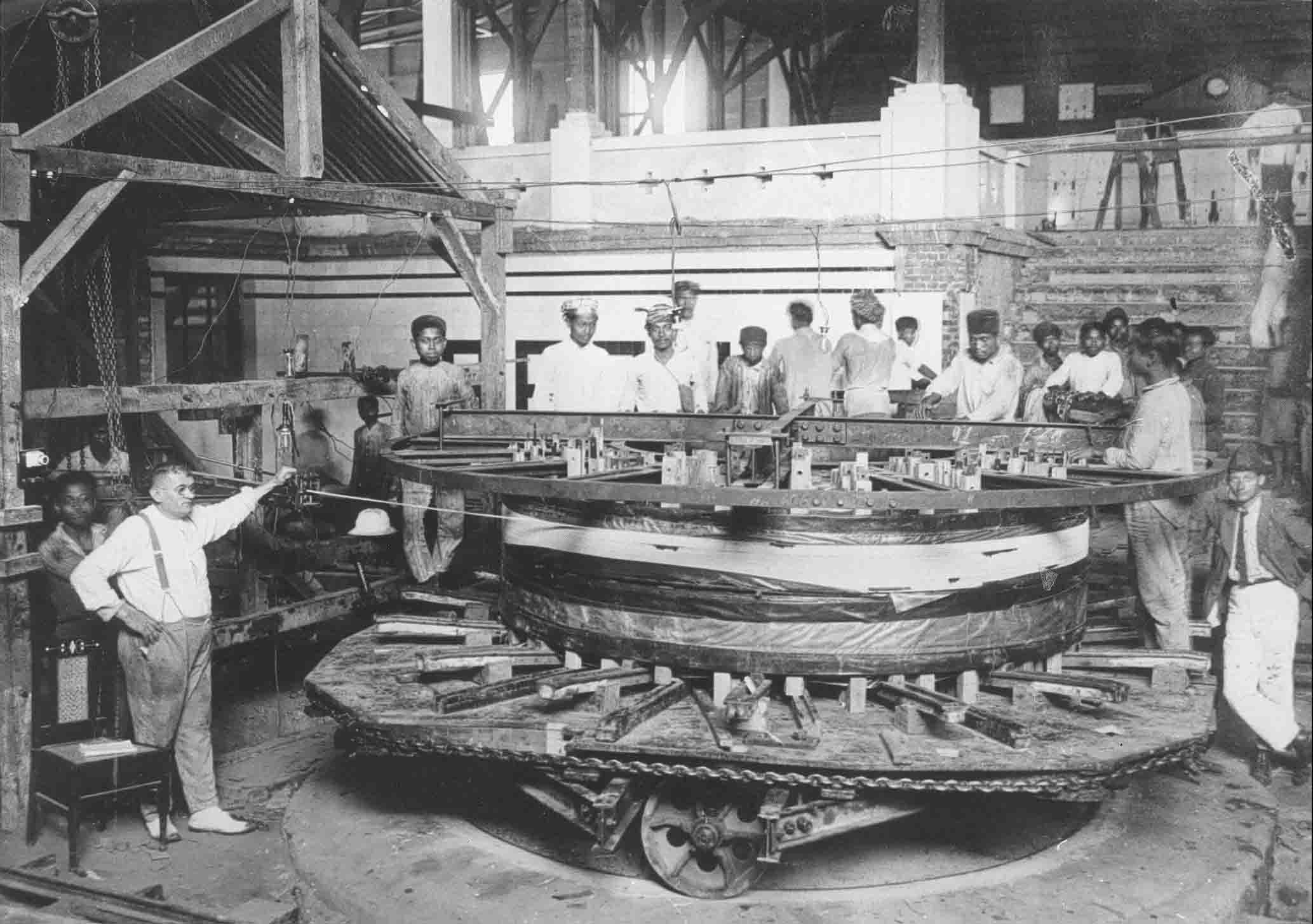
Fading past and memories
The section
“Dijkstra-Malabar” of this website, aims to give regard to the work and
circumstances of Klaas Dijkstra’s "30 years of Radio commitments". From which he
spent nearly 25 years in the Dutch East-Indies' Radio Communications Services (colonial
PTT)(1920-1945).
He worked for many years on this manuscript, and they never seriously credited
him for it.
Material on: Malabar and the Radio services in former Dutch East Indies can be found on internet. However, inside views are normally very hard to disclose.
I have made
a temporary selection on the photographic material from Klaas Dijkstra’s private
archive. He made several versions of his “opus magnum”, of which a shorter
version is published in November 2006 (consider
the top of Dijkstra-Malabar main page).
Dijkstra made a very comprehensive private manuscript, of which some material
has never been published before. For us luckily, Dijkstra was a talented amateur
photographer, too. When he was on his second “tropical leave” in Holland, in 1935, he left a
suitcase full of documents behind. This material would otherwise, most likely, have
been lost during the Japanese occupation of Indonesia (1942 - 1945).
We will focus, for this occasion, mainly on the construction work done on Dr de Groot’s huge Poulsen arc type transmitter.

Constructing
these kinds of magnetic coils is a very delicate job. The “instrument maker” Mr
Lazarus Potcognak supervised it (a Czechoslovak)(Dijkstra didn’t know the
correct spelling, but phonetically it must be right)(he is the, a bit corpulent, person standing on the left)
They worked continuously day and night on the coil constructions. The upper coil
was Dijkstra’s first task in East-Indies (early 1921)(he designed it).
Its weight was 10 tons and the coil diameter was 3 metres.
I have placed the photos against the line drawing below, in a logical order. The upper
coil did not have a function in the frequency domain. It has a magnetic bias
function only, and was fed with a constant DC current. Two difficulties had to
be countered: the accumulation of heat inside the screened coils; and its
electrical insulation properties. All sound simple to be solved, but during
those days Dutch East-Indies was, technically, a remote place. Everything had to be ordered
via the Ministry of Colonial Affairs in the Hague (NL). Which procedure caused,
generally, a delay, between a requirement and its acceptance, of at least 9-12
months. That is why they chose for local available ebonite insulation material,
which is, however, inferior compared to ceramics.
Dutch caption:
Met het wikkelen wordt gestadig doorgegaan, dag en 's nachts. De corpulente persoon links is de instrumentmaker Lazarus Potcognak (Tsechoslovaak).
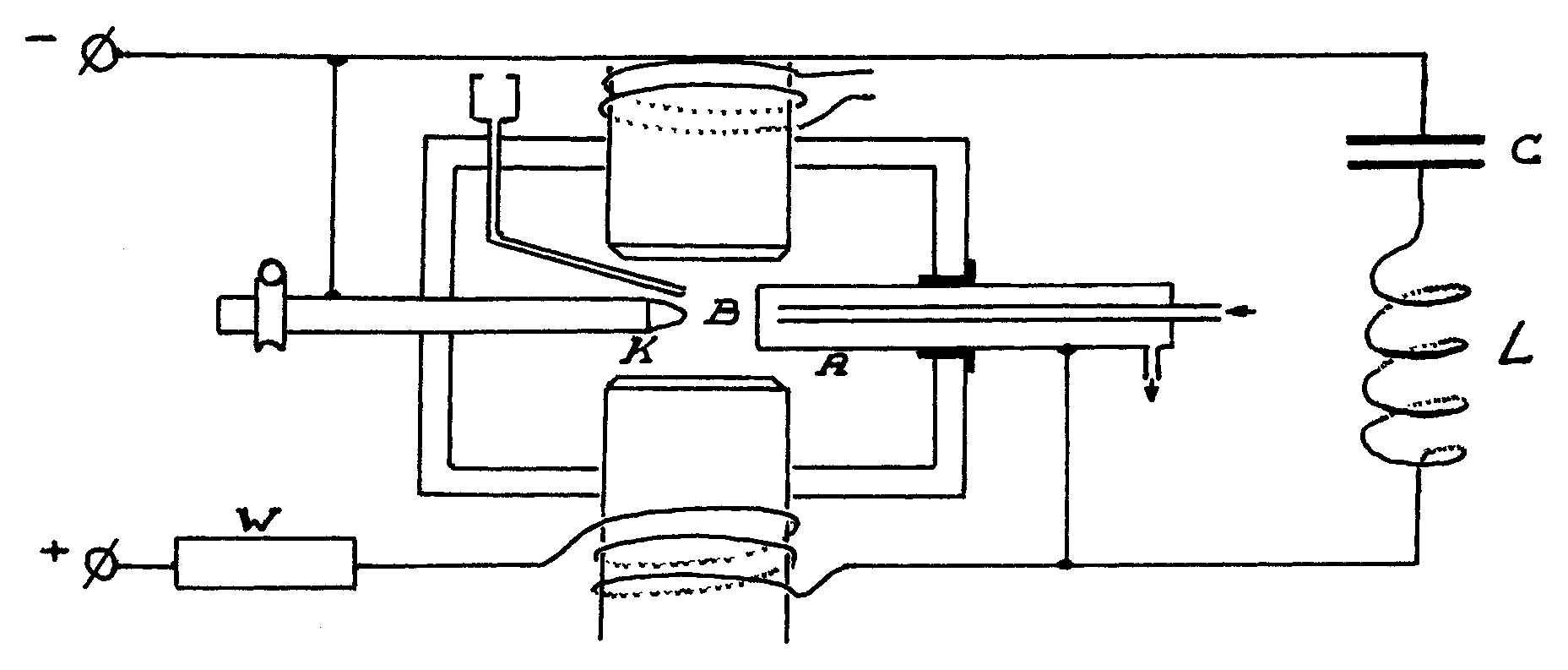
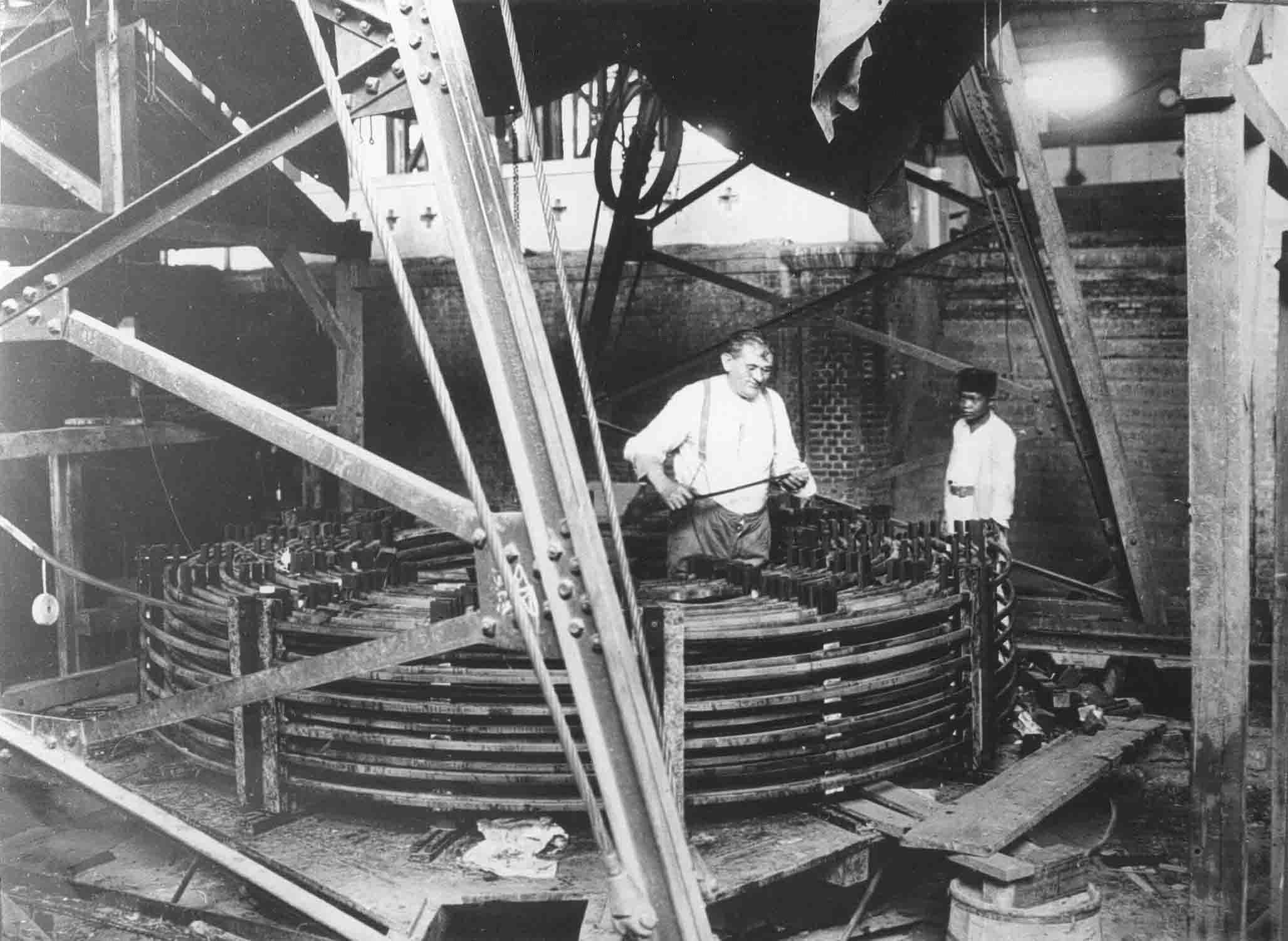
Mr Potcognak
did all the delicate work by himself.
The principle circuit shown above shows, that the lower coil section is a part
of the high frequency (RF) circuit.
Dr. de Groot used hydrogen in the Poulsen arc-chamber. What is not well known
is, that commonly one often used, for instance in the States, in those days, inferior
petroleum instead.
Dr de Groot visited in 1917 the United States on his trip back from Holland to
Dutch East-Indies. The Mediterranean sea was not safe enough due to World Ware
One. During that trip he purchased some Poulsen arc transmitters (100 kW types)(He
might even have met with Mr Poulsen).
These transmitters were still operational in the early 1920s. A particular
downside was, that after some four hours of operation, the transmitter had to be
switched off, to allow cleaning of its arc-chamber. Which was a rather dirty
job!
Dutch cation:
De laatste hand wordt gelegd aan de onderste bekrachtigingsspoel geconstrueerd door de radiotechn.ambtenaar Otten. Opname: 8/11/1921
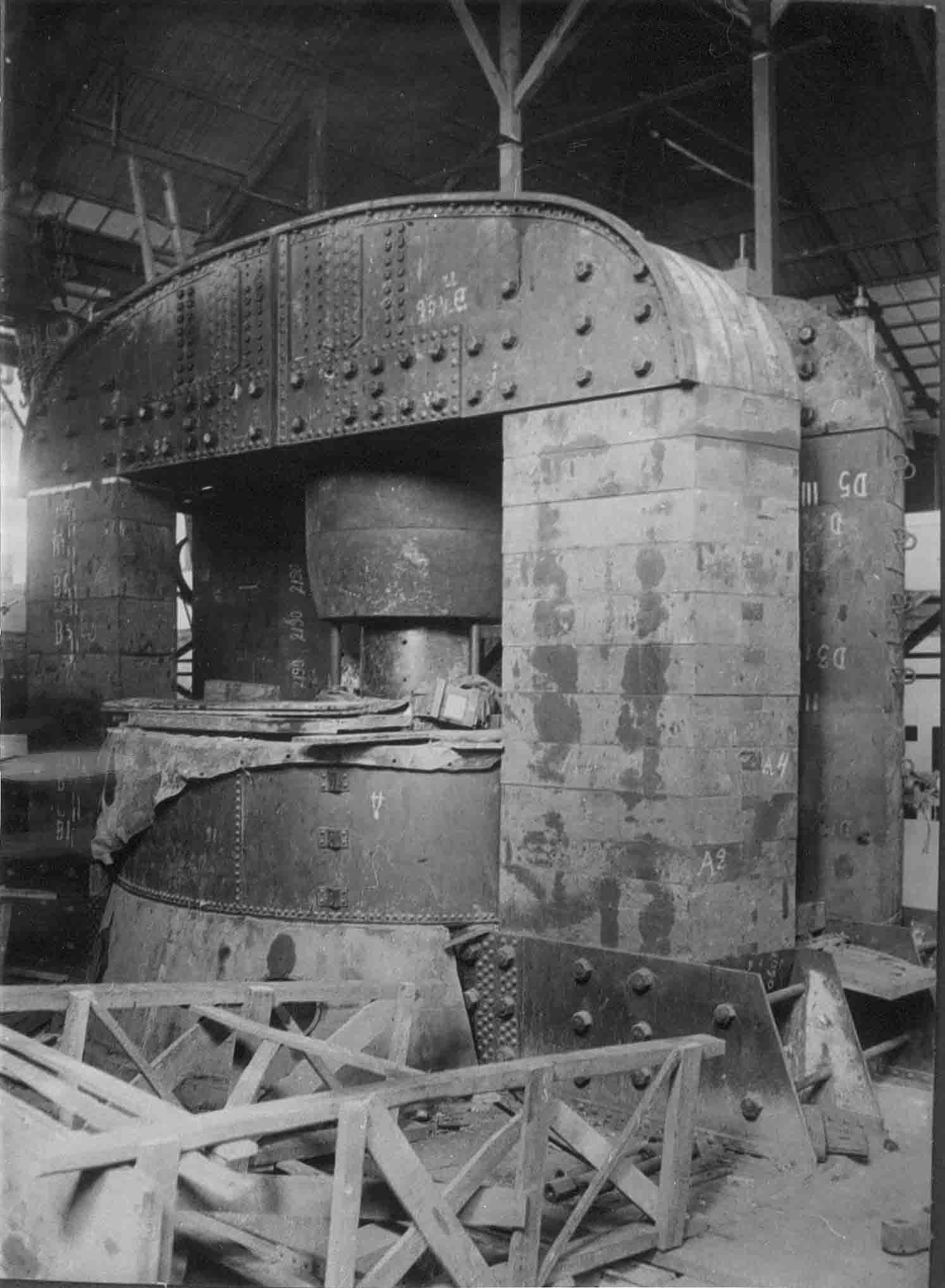
Details of the frame construction of the 2400 kW Poulsen arc type transmitter is easy to understand. The lower coil is mounted in a so-called “oil bath”. According Dijkstra, for cooling reasons.
Dutch caption:
Het complete magneetgestel van de 2400 kW booglampzender. De onderste magnetiseringsspoel is reeds aangebracht en bevindt zich in de tank, welke met olie wordt gekoeld. Het wachten is op de bovenste bekrachtigingsspoel. Opname: 7/2/1922
Quite embarrassing was, that when the arc-chamber had to be built into the main frame structure, that they discovered that the diameter of the centre magnet-poles (of 1 metre diameter!) proved to be too big for the centre hole of the bronze arc chamber. However, there existed in Indonesia, in those days, no lathe that could handle a size of a diameter of 1 metre! Consequently, one had to file (chafe), by manual means, until the centre rod could fit inside the arc-chamber! This work took several months.
(consider also:Poulsen transmitter photographs at Malabar)
To close this photographic galery:
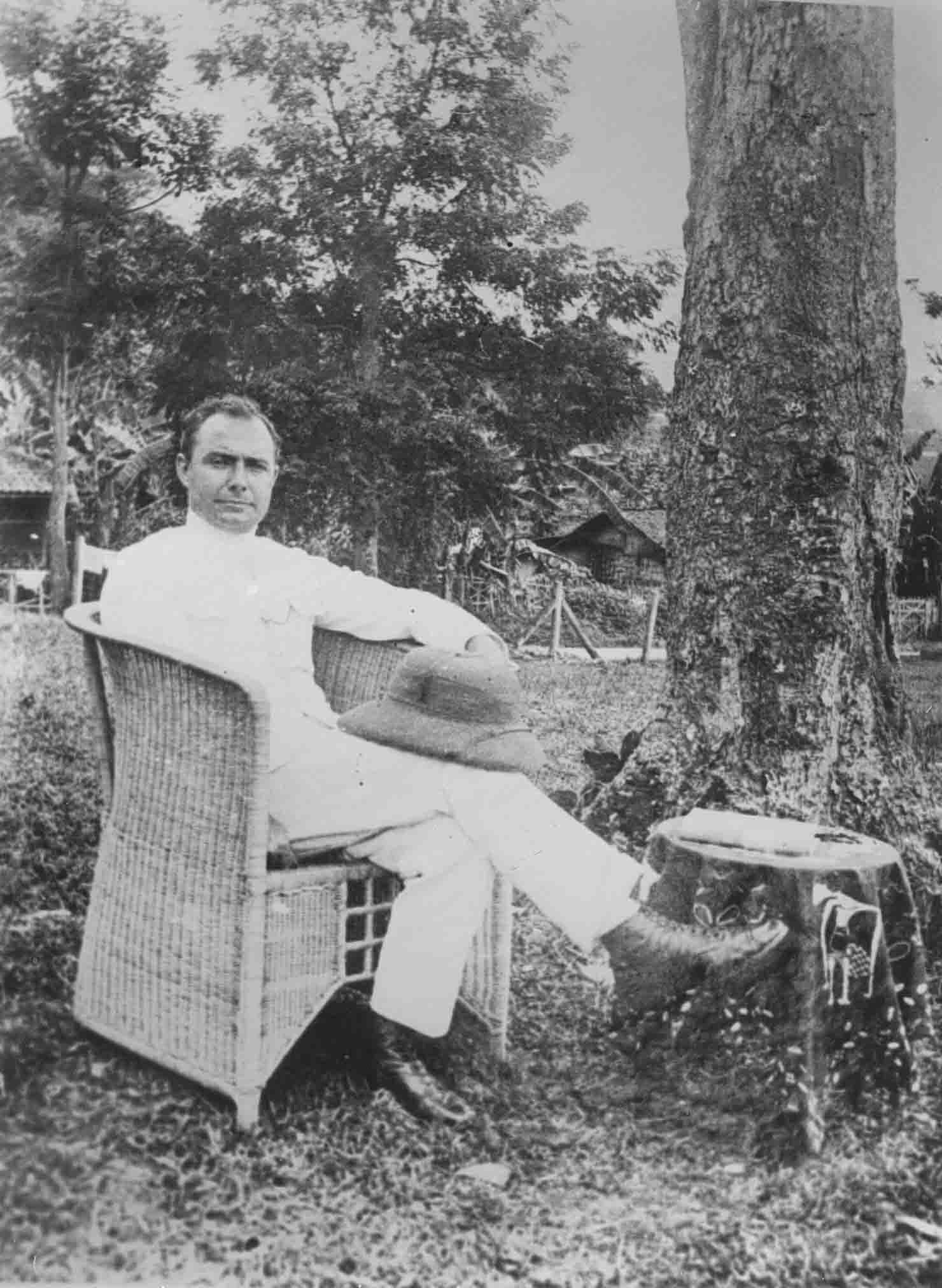
Mr L.W.H.
van Oosten was, likely, the first person in whole East-Asia, who received
the radio message (telegram) of the “Armistice” in Europe, on 11 November 1918.
He was stationed on a small (Indonesian) island just near Singapore. Via his
connections, they passed on this message to Singapore. The regular British
message arrived there some 20 hours later!
This does not mean that the Dutch East-Indies Radio Services were better off
than their British colleagues!
He had, irregularly, experimented with his receiver during he was on his radio
watch. He was a colonial PTT employee. Their response was, to object his
“unauthorised” behaviour and to give him a very serious official telling-off!
However, after Dr de Groot heard about it, he turned the embarrassment down, and
Mr van Oosten now received instead special compliments from the highest PTT
authorities in Batavia (which was the capital of Dutch East-Indies, now
Jakarta).
Most likely is, that he received the German radio station Nauen (POZ)(North-West
of Berlin), which generated the strongest signals (Telefunken “Maschinensender”
type)(Kootwijk obtained later similar transmitter type)
Dutch caption:
De heer L.W.H. van Oosten, radiotelegrafist bij de P.T.T. Dienst in Ned. O. Indië, is vermoedelijk de eerste in de gehele Oriënt geweest, die het radiotelegram over de wapenstilstand ontving, die op 11 November 1918 in het bos van Compiegne werd gesloten.
Back to: Poulsen transmitter photographs at Malabar
Back to: Dijkstra-Malabar